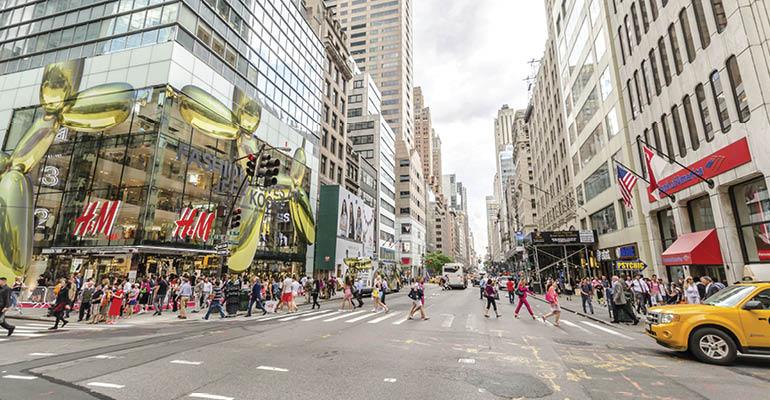On the second day of the 2017 NAREIT REITWeek panels featuring retail REIT executives drew big crowds, as GGP, PREIT and Macerich explained how they have learned to benefit from the dramatic changes underway in the sector. They also talked about what tenants want from landlords in today’s market and how they plan to deliver.
Mack-Cali, the Jersey City, N.J.-based operator of class-A office buildings and multifamily developments, has been transforming its portfolio lately by making a bigger push into the multifamily sector. Waterfront developments in New Jersey and projects on Manhattan’s West side are paying off for the company, said Michael J. DeMarco, Mack-Cali CEO. But success is not a simple matter of finding the right sites for new properties.
- Sometimes success comes down to simply putting in the work and doing so with integrity, according to DeMarco. On that note, Mack-Cali’s philosophy includes being honest with Wall Street. Otherwise, the company is focusing on so-called place making. “We are looking for spaces that earn above-average returns and waterfront space does that,” he said during Mack-Cali’s company presentation on Wednesday. Company executives would like Mack-Cali to own 4,000 to 5,000 apartment units in about three years, and to own most of the best assets in markets where it outperforms, DeMarco said. The executive team expects this vision to impact dividends in a positive way.
- Manhattan’s diminished retail occupancy levels are due to rent prices, not retailer demand, GGP asserts. Not so long ago, retailers would open stores in high street locations to promote their brands. The rise of e-commerce, however, has dampened many retailers’ appetite for—and ability to maintain—the extensive brick-and-mortar store networks they had before. “If priced right, spaces will be leased,” said Sandeep Mathrani, CEO of Chicago-based GGP, referring to Manhattan’s Fifth Avenue between 47th and 52nd Streets. “This is a price issue, not a demand issue.” Mathrani also noted that lower Fifth Avenue, where rents are lower, is attracting attention from retailers such as Lululemon, which is reported to be in the running to take over Sephora’s vacancy there. Effective retail rents in Manhattan have fallen by 20 percent to 30 percent from their heights in 2014, according to news reports.
- Mall owners expect two major certainties in the years ahead, even as the retail world changes—tenant mixes will be increasingly diverse, and leasing negotiations will be more complex. The mall tenant mix is different today than it was five years ago, said Joe Coradino, chairman and CEO of PREIT. Over time, tenant mixes will lean more heavily toward entertainment, fast fashion, dining, health and fitness. Dining, in particular, accounts for about 20 percent of PREIT’s tenant space, and could increase to 30 percent over time, he said. Shoppers are increasingly voting, with their dollars, for fast-fashion apparel retailers, off-price discounters and entertainment. Just as retailers need to be attuned to what consumers want and need, so do mall owners. Gone are the days when landlords could attend industry trade shows and expect to easily sign new leases. “The business is not cookie cutter anymore,” Coradino said. “The party is over; this is hard work now.”
- Sears is a ‘liquidating business,’ as The Macerich Co., sees it. Department store retailers stay in the news, one way or another. Many retail REITs are choosing to deal with store closures through redevelopments. For Santa Monica, Calif.-based Macerich, Sears offers the biggest opportunity for anchor redevelopments. “Sears is primarily a liquidating business, in our opinion,” said Robert Perlmutter, Macerich CEO and senior executive vice president. “They own their locations, which are often in the best locations in the mall.” Many department store companies previously aimed to maintain fleets of 700 to 900 stores. That is no longer the case, as retailers instead aim to maintain chains of 300 to 450 stores.

